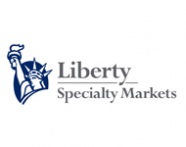A sketch of the future: technology and the fine art and specie market

Authored by David Saillen, Head of Fine Art & Specie - Continental Europe, Liberty Specialty Markets
The art world is no stranger to change. Whether the discovery of new media or a radical shift in style, each step in the history of fine art has inspired new admirers and detractors. Now, the fine art market stands at the threshold of another revolution.
In other words: a technological shift is coming, by which we mean the sum of a myriad changes, small and large, to how the art world will function in the coming decades. Whether elements of the Internet of Things incorporated into art maintenance, exhibitions held in metaverse, or authenticity certificates on the blockchain, we need to plan for and adapt to a future which looks very unlike the analogue fine art world of the past.
The coming change is as or more significant than the artistic discoveries of the Quattrocento. It will have implications for a range of institutions, whether private collectors, public institutions or service providers to the market such as insurers.
Finally, it is a huge range of changes, with various effects on the fine art landscape. Future articles from our team will delve into the details of some of these, but here, I intend to sketch the outlines of several consequential issues to our broker partners and clients.
A real-time network of fine art
Underwriters are used to relying on data to price and select risks and renew contracts. Fine art teams are no different; but future technology is going to allow us to gather far more data, of better quality, than ever before.
Elements of the Internet of Things are set to become vital tools: by locating an environmental monitor in the frame of a painting, for example, we’ll be able to measure the suitability of the surroundings in real time. With the frame itself broadcasting information about temperature, humidity, lighting, or exposure, we can prevent or mitigate damage before any serious effects occur. Similar monitors can be in the plinth of a statue or even in crates for transport.
By connecting artworks, their surroundings and exhibition spaces into our live models, we can better adjust, measure and mitigate risk to priceless artefacts. In the future, this may reduce the need for underwriters to travel too: a camera or virtual reality tour of a space may suffice to judge its security and appropriateness when combined with ongoing real-time environmental monitoring.
This will provide security to insureds, reassure underwriters and aid risk selection. And it will enable more efficient processing of any claims, to the advantage of all parties in the value chain.
Caveat fraudator [or: Fraudster beware]
Art forgers should also beware the impact of technology. While many things have already been written about the rise and fall of cryptocurrencies and NFTs, the underlying technology – a distributed ledger – has the potential to revolutionise certificates of authenticity.
Currently, physical certificates, issued once or at intervals a while apart, are somewhat vulnerable. A blockchain based digital certificate, revalidated at every significant stage of an artwork’s journey and immune from outside interference by virtue of its distribution across the chain, won’t be. With real-time monitoring, that data can be paired with photography or environmental reporting, almost eliminating the potential for fraud.
Institutions will adopt this and similar technological solutions to ensure the priceless pieces in their collections, if on loan, for example, remain secure. And underwriters will, I suspect, want to encourage the implementation of this technology in the art world through pricing and risk selection.
The digital art marketplace
Finally, the very process of trading fine art has already shifted dramatically. Artworks, antiques and collectibles are increasingly traded online, a trend the pandemic accelerated. While online transactions represented around a tenth of the global art market value prior to the pandemic, by 2021, sales of the online art and antiques market peaked at 13.3 billion U.S. dollars, accounting for roughly a fifth of the total art market value.
This presents its own risks. Forgeries are more likely without digital authenticity certificates, and online sales increase uncertainty across a range of factors including transport. Cyber exposures are set to grow, with exchanges and online marketplaces targeted. Payment of large sums will need to be secured.
Some have suggested that future exhibitions and art fairs will take place at least in part in the metaverse; that carries its own additional cyber and intellectual property risks. But there is no stopping the digitalising of the fine art and specie market; and technology provides us with the tools to protect it.
Insuring the future of art
The consequences of such a huge range of changes are vast and disparate, and will affect the entire art world. But it is a resilient marketplace. With forethought and consideration, we can implement the promise of technology to the benefit of all stakeholders in the market. This is just a sketch of the future; time will fill in the details.
About Liberty
Liberty Specialty Markets offers specialty and commercial insurance and reinsurance products across key UK, European, Middle East, US and other international locations.
We provide brokers and insureds with a broad range of products through both the Company and Lloyd’s markets and have over 1,700 staff in approximately 65 offices. Liberty Specialty Markets was established in September 2013 bringing together Liberty’s company, syndicate and reinsurance operations into one combined operation, composed of three business units: Commercial, Specialty, and Reinsurance (Liberty Mutual Re). This integrated approach means brokers and clients can benefit from our global reach and operating efficiencies.
Liberty Specialty Markets is part of global insurer, Liberty Mutual Insurance Group, a diversified global insurer, formed in 1912 and headquartered in Boston, Massachusetts. Liberty Mutual is the 5th largest global insurer based on 2017 gross written premium, with over 50,000 employees in 30 countries and economies around the world. Our purpose is to help people embrace today and confidently pursue tomorrow. The promise we make to our customers throughout the world is to provide protection for the unexpected, delivered with care. We achieve this by offering a full range of personal, commercial, and specialty Property & Casualty insurance coverages. Our customers’ trust has earned us the 68th spot on the Fortune 100 list of largest corporations in the U.S., based on 2017 revenue.

